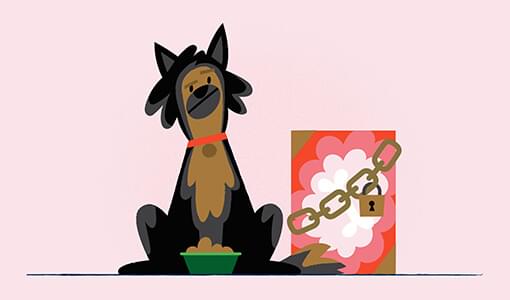As your vet may have explained, elbow and hip dysplasia are developmental conditions that affect dogs and are often diagnosed in dogs younger than 18 months old. It means their joints have failed to develop normally, which leads to osteoarthritis.
If your dog has experienced the discomfort of dysplasia and osteoarthritis, it’s natural to feel anxious about them exercising and potentially making the condition worse.
The good news is that there are plenty of activities you can do to keep your dog in shape and leading a full happy healthy life:

1. Frequent short walks
When you know your dog has a joint problem that causes stiffness or limping, it’s tempting to want to protect him, to avoid setting off another flare-up. However, no exercise is as bad as too much exercise. This is because pets that aren’t exercising as much as they should can gain weight, and this can put pressure on the joints.
Your vet may already have advised you about the length and regularity of exercise, but shorter, more frequent walks are usually better during your dog’s recovery.

2. Go for a swim
Low-impact and high-resistance exercises such as swimming are really well suited to dogs with joint conditions like dysplasia. This is because they help build up the larger buttock muscles, which help support the ball and socket hip joint. Likewise, low-impact exercise is easier on the elbow joints.
Water treadmills and using pet hydrotherapy pools with the help of a professional (Petplan, like most pet insurance policies, will provide a limited number of hydrotherapy sessions) are quite common nowadays. Swimming in ponds, rivers or lakes is also good. Just be careful that your pet doesn’t get injured climbing up wet slippery banks, especially if he's young and excitable.

3. Agility training
Agility training on flat surfaces is a good option for dogs with joint conditions. Weaving around obstacles and going through tunnels will provide both physical and mental stimulation.

4. Games
Games that are relatively low impact, but which keep your dog busy, are a good idea too. Playing search and find is a good way to encourage your dog to move without overdoing it. And, if you’re interacting with your dog and playing together, you both get a lot out of it.

5. Diet
Exercise is only half the story when it comes to your dog’s health and body condition. Diet is also very important.
Your vet will no doubt have explained how good it is for your dog to maintain a healthy weight. One of the easiest ways to do this is through portion control. It’s easy to over feed, so weighing out food each time can help. Likewise, we’re more likely to give them lots of treats when they’re going through a tough time. So think about the volume of food you’re giving your dog and the number of calories it contains.
Talk to your vet if you need advice about your dog’s diet or take a look at our tips on doggy diets here
